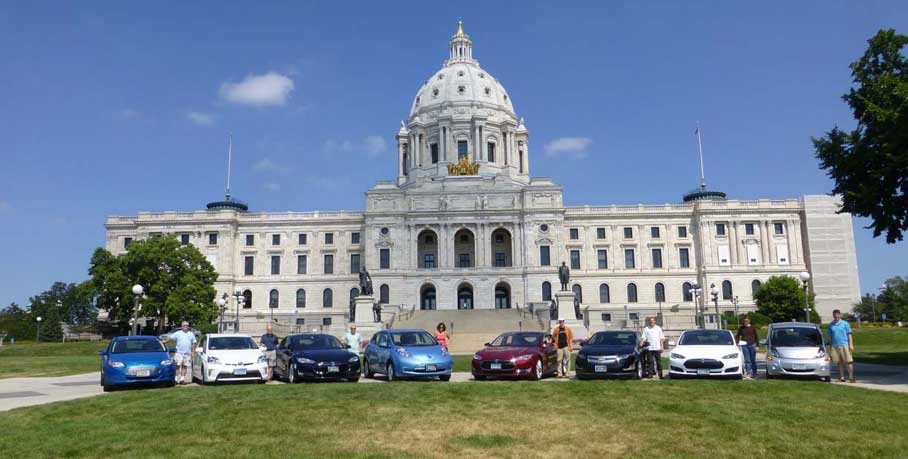|
Visually, not much happened this week. Lots of 'behind the scenes' work to prepare for this week. So, I figured this was a good week to talk about cars! Let me ask you to consider a car that... Has more room in it for the same exterior size. Magically fills itself so you have a full tank every morning. Has lower maintenance. Has a higher quality ride (quiet, smoothness) as other cars at the same price point. Has more performance (acceleration, stability, instant throttle response, to "gear lag" when shifting). Is safer to drive. Can be preheated in a closed garage with ZERO fear of CO poisoning. Oh, and fuel costs between half and a quarter of what you pay now. "Now wait", you may be thinking, "what is the catch"? The drawbacks are that you have to spend about 10 seconds to start the overnight fill-up and the 'gas tank' is sized to give you a daily range of 100-200 miles. If you drive further than that, refilling in the middle of the day can take 20-60 minutes. Yes, many of you may have guessed, that describes both my wife's and my car. They are electric cars and they are available now. At this early stage (about 1% of the cars sold this year in the U.S. are electric) it is very convenient if you have a reliable place to plug in at home or at work.
Many families I know have one electric car and a gas guzzler for trips, although I know of a number of families where both cars are electric. In our case, we also drive electric because it allows us to decide how "clean" the cars are. The CO2 footprint of fueling the cars is as low as we want it (and we want it to be very low). In addition, the fuel is all regional. Most generated in Minnesota, some in bordering states. This puts our money to use in our local economy rather than elsewhere in the country or world. And for every kWh of electricity we use from the grid to charge our cars, we will be sending a kWh of electricity generated by our solar panels back into the grid. As the mayor of Indianapolis, Greg Ballard, said at a Fresh Energy event in Minneapolis a few months ago, "Do you want to support our troops? Drive an electric car." (more information about his city's electric car plans here). Tying this back into our house, we never would have had the opportunity to produce as much energy as both our house and both vehicles use, if the cars used gasoline. The reason for that is gasoline cars are very inefficient. A friend of my refers to cars with internal combustion engines (ICE) are great heaters, that also give you a little bit of propulsion. Gasoline is a very energy dense way to store energy. One gallon of gas has the same amount of energy as 33.7kWh of electricity. The problem is an ICE is between 20%-35% efficient. You can think of it this way, for every $20 of gas you put in your car, $13-$15 of that is going into making heat. In Minnesota, in the winter, that is wonderful as you will make use of a few dollars of that heat (and throw away the rest). So, in order to produce as much power (converted from gallons of gas into kWh) with our solar panels, we would need about a 45kW solar array. That is about 150 panels. Our planned system is 18kWh (~9kW for the cars and 9kW for the house). We don't have room for more than a couple more panels, certainly not the extra 80-90 we would need. So, in closing, let me just say that due to electric cars (not to mention mower); we haven't needed to buy gasoline in over two and a half years, are within reach of our dream of owning a house that provides all the energy both our cars and house use on an annual basis, and have had the best driving experience I have ever had. This week we have lots of activity going on at the house, and I am looking forward to showing you all the changes. |
AuthorMark really doesn't like to talk about himself, the house is much more interesting. Archives
September 2020
Categories
All
|
